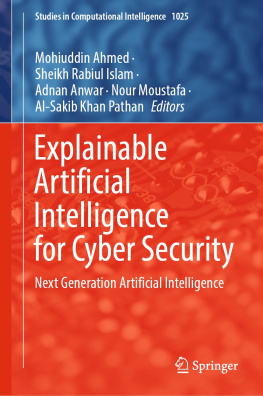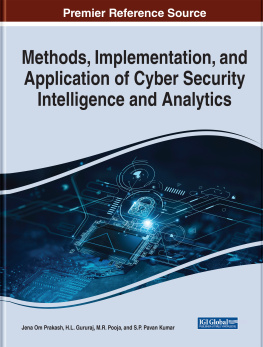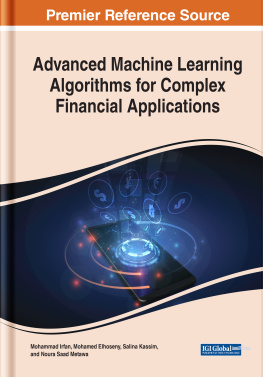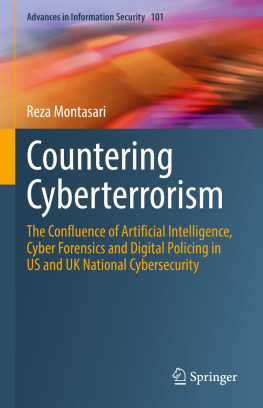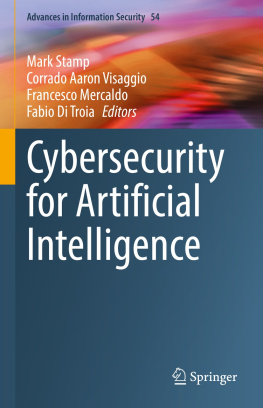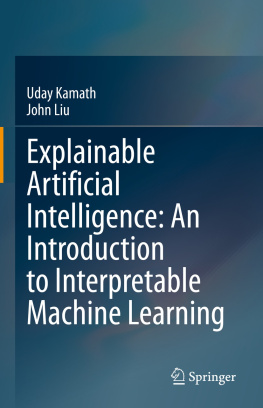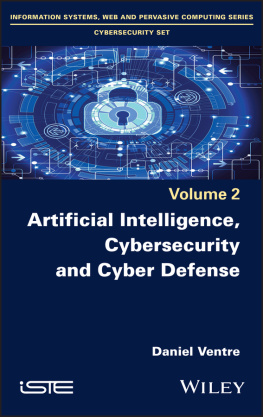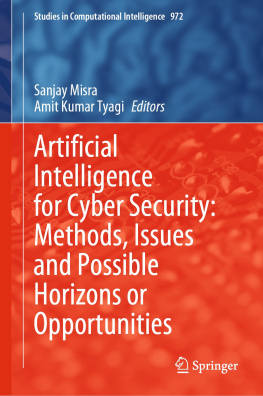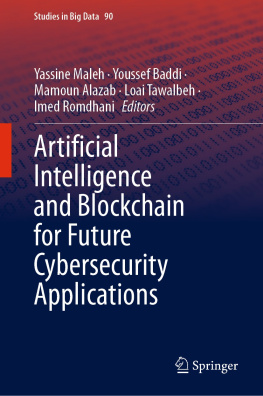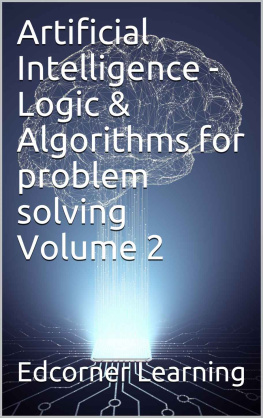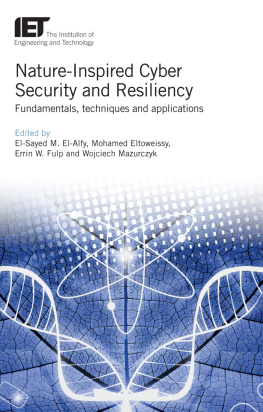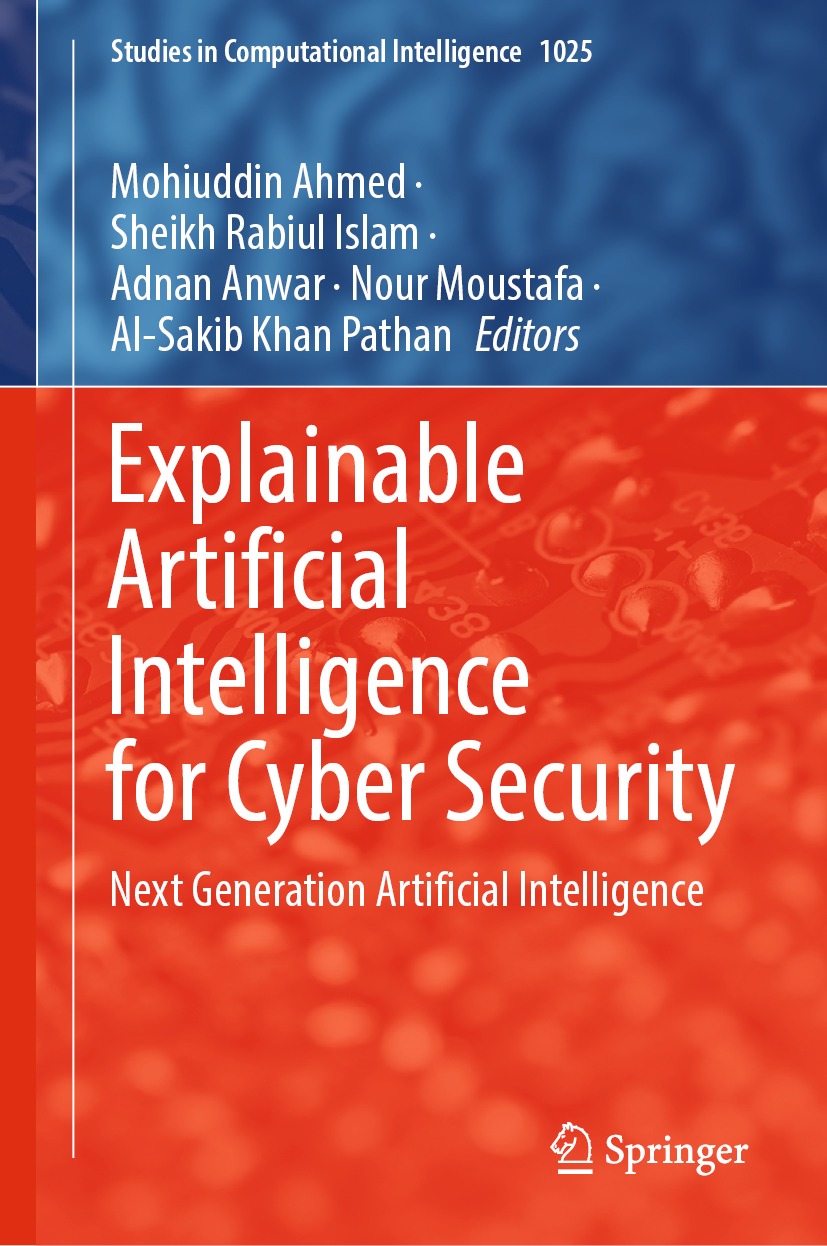Volume 1025
Studies in Computational Intelligence
Series Editor
Janusz Kacprzyk
Polish Academy of Sciences, Warsaw, Poland
The series Studies in Computational Intelligence (SCI) publishes new developments and advances in the various areas of computational intelligencequickly and with a high quality. The intent is to cover the theory, applications, and design methods of computational intelligence, as embedded in the fields of engineering, computer science, physics and life sciences, as well as the methodologies behind them. The series contains monographs, lecture notes and edited volumes in computational intelligence spanning the areas of neural networks, connectionist systems, genetic algorithms, evolutionary computation, artificial intelligence, cellular automata, self-organizing systems, soft computing, fuzzy systems, and hybrid intelligent systems. Of particular value to both the contributors and the readership are the short publication timeframe and the world-wide distribution, which enable both wide and rapid dissemination of research output.
Indexed by SCOPUS, DBLP, WTI Frankfurt eG, zbMATH, SCImago.
All books published in the series are submitted for consideration in Web of Science.
More information about this series at https://link.springer.com/bookseries/7092
Editors
Mohiuddin Ahmed , Sheikh Rabiul Islam , Adnan Anwar , Nour Moustafa and Al-Sakib Khan Pathan
Explainable Artificial Intelligence for Cyber Security
Next Generation Artificial Intelligence

Logo of the publisher
Editors
Mohiuddin Ahmed
School of Science, Edith Cowan University, Joondalup, WA, Australia
Sheikh Rabiul Islam
Department of Computing Sciences, University of Hartford, West Hartford, CT, USA
Adnan Anwar
School of IT, Deakin University, Melbourne, VIC, Australia
Nour Moustafa
School of Engineering and IT, UNSW Canberra, Campbell, ACT, Australia
Al-Sakib Khan Pathan
Department of Computer Science and Engineering, United International University (UIU), Dhaka, Bangladesh
ISSN 1860-949X e-ISSN 1860-9503
Studies in Computational Intelligence
ISBN 978-3-030-96629-4 e-ISBN 978-3-030-96630-0
https://doi.org/10.1007/978-3-030-96630-0
The Editor(s) (if applicable) and The Author(s), under exclusive license to Springer Nature Switzerland AG 2022
This work is subject to copyright. All rights are solely and exclusively licensed by the Publisher, whether the whole or part of the material is concerned, specifically the rights of translation, reprinting, reuse of illustrations, recitation, broadcasting, reproduction on microfilms or in any other physical way, and transmission or information storage and retrieval, electronic adaptation, computer software, or by similar or dissimilar methodology now known or hereafter developed.
The use of general descriptive names, registered names, trademarks, service marks, etc. in this publication does not imply, even in the absence of a specific statement, that such names are exempt from the relevant protective laws and regulations and therefore free for general use.
The publisher, the authors and the editors are safe to assume that the advice and information in this book are believed to be true and accurate at the date of publication. Neither the publisher nor the authors or the editors give a warranty, expressed or implied, with respect to the material contained herein or for any errors or omissions that may have been made. The publisher remains neutral with regard to jurisdictional claims in published maps and institutional affiliations.
This Springer imprint is published by the registered company Springer Nature Switzerland AG
The registered company address is: Gewerbestrasse 11, 6330 Cham, Switzerland
Dedicated to
My Loving Son: Zaif Rayan
Mohiuddin Ahmed
My studious daughter: Farisha Islam
Sheikh Rabiul Islam
My devoted family
Adnan Anwar
My family
Nour Moustafa
My family
Al-Sakib Khan Pathan
Preface
Cyber security is a very complex and diverse discipline. Numerous technological problems need to be solved to make the world safer. It is evident that there is no sign of a decrease in cyber-crime; instead, it is the opposite in nature due to the unprecedented technological advancement and our reliance on it. The cyber security community has been leveraging artificial intelligence (AI) technology to solve several complex computing problems, e.g., intrusion detection systems to identify malicious network activities. In the past two decades, there have been hundreds of algorithms developed capitalizing on the effectiveness of artificial intelligence. Therefore, we have observed the transition from classical artificial intelligence to deep learning, federated learning, reinforcement learning, etc. These techniques have been critical in providing solutions for cyber security problems. However, most recent variants of artificial intelligence-based methods are being treated as black-box ones. There is a lack of explanation that humans can easily understand the solution(s) offered. For example, a particular neural network that is perfect for identifying phishing attacks (i.e., the deception using email) is still obscure due to its complex internal working mechanism. Hence, it is important to explore various avenues of explainable artificial intelligence (XAI), an emerging area of artificial intelligence, to provide a human-friendly decision for cyber security from a broader perspective.
In this context, this book addresses the challenges associated with the explainable artificial intelligence for cyber security by providing a bigger picture of the core concepts, intelligent techniques, practices, and open research directions in this area. Additionally, the book will serve as a single source of reference for acquiring knowledge on the technology, process, and people involved in the next-generation artificial intelligence and cyber security.
Chapters
Chapter : The Past, Present, and Prospective Future of XAI: A Comprehensive Review
Chapter : An Overview of Explainable Artificial Intelligence for Cyber Security
Chapter : Artificial Intelligence: Practical and Ethical Challenges
Chapter : Domain Knowledge-Aided Explainable Artificial Intelligence
Chapter : Machine Learning Based IDS for Cyberattack Classification
Chapter : Artificial Intelligence for Cyber Security: Performance Analysis of Network Intrusion Detection
Chapter : Leveraging Artificial Intelligence Capabilities for Real-Time Monitoring of Cybersecurity Threats
Chapter : Network Forensics in the Era of Artificial Intelligence
Chapter : Obfuscation-Based Mechanisms in Location-Based Privacy Protection
Chapter : Intelligent Radio Frequency Fingerprinting to Identify Malicious Tags in the Internet of Things
Chapter : Explainable Artificial Intelligence for Smart City Application: A Secure and Trusted Platform

